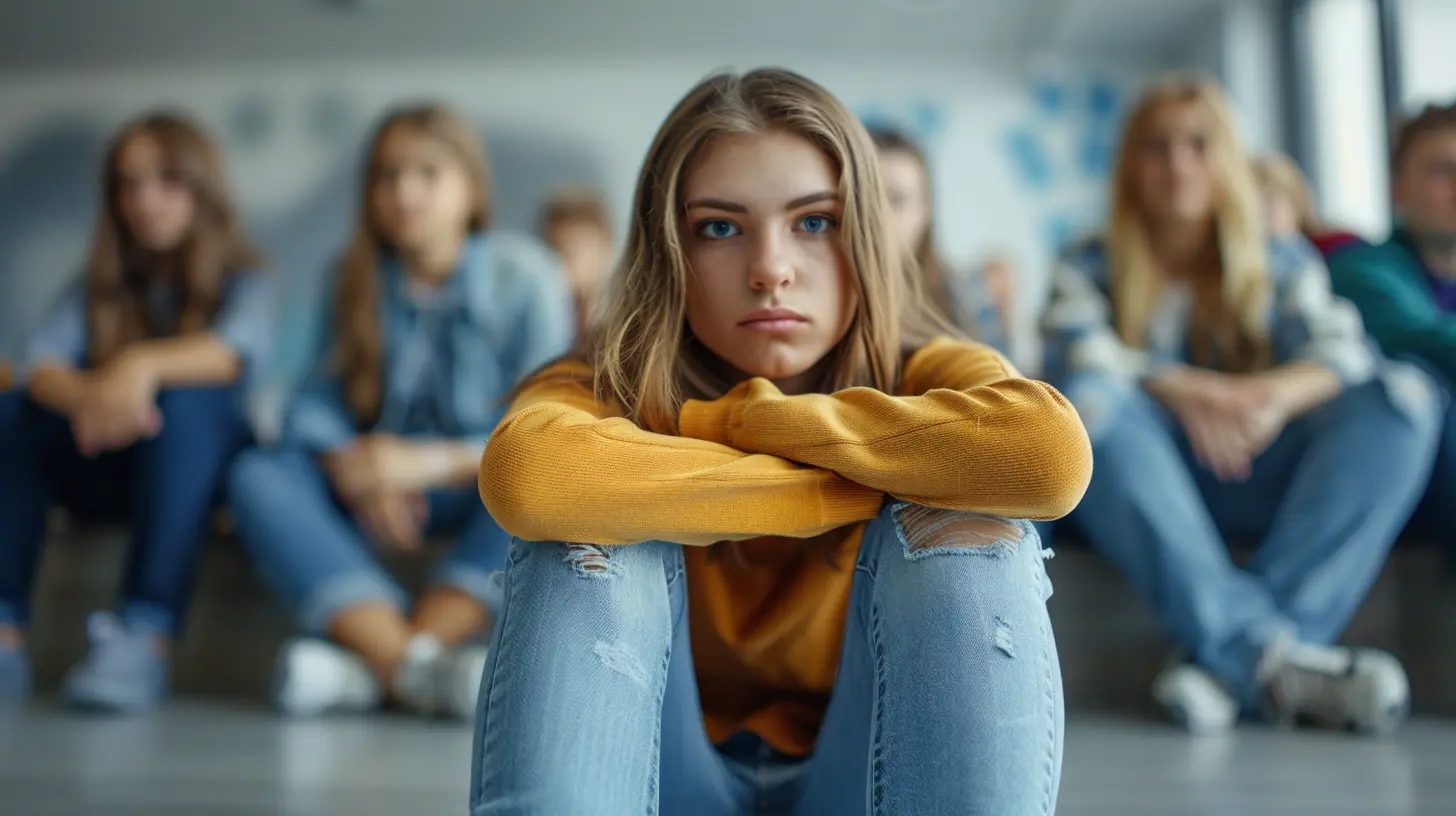The Role of Peer Pressure in Adolescent Substance Use
2 November 2025
Let’s be real for a second — being a teenager is hard. Hormones are flying, identities are forming, and let’s not forget the mounting pressure from school, parents, and yep… friends. While friendships can be full of support and laughter, they can also come with some serious baggage — like peer pressure. And when it comes to adolescents and substance use, peer pressure can be a pretty powerful force.
In this article, we’re diving into what peer pressure really looks like during adolescence, how it influences substance use, and what can be done to push back against it. Whether you're a teen, a parent, or just plain curious, you've come to the right place.
What Is Peer Pressure, Anyway?
We hear the term all the time, but what exactly does "peer pressure" mean?Peer pressure is when people within the same age group — usually your friends, classmates, or social circle — influence your decisions. It can be direct (like someone saying, “Come on, just take a hit — it’s not a big deal”), or indirect (seeing your friends drink and feeling like you should too, just to fit in).
And guess what? It’s not always negative. Peer pressure can also push someone to study harder, try out for sports, or stay out of trouble. But in the context of substance use, we’re obviously talking about the darker side of things.
Why Is Adolescence Such a Vulnerable Time?
Imagine trying to assemble a puzzle without the picture on the box. That’s what adolescence can feel like. You’re figuring out who you are, who your friends are, and where you belong in the world — all while your brain is still under construction.Here’s the thing: the adolescent brain is wired for risk-taking. The part responsible for decision-making, the prefrontal cortex, is still developing. Meanwhile, the emotional and reward centers of the brain are in overdrive. That imbalance makes teens more impulsive and more likely to seek approval from their peers.
Add a little curiosity, a few social pressures, and the desire to fit in — and bam! You’ve got a recipe for experimenting with substances like alcohol, marijuana, cigarettes, and even harder stuff.
Types of Peer Pressure That Influence Substance Use
Not all peer pressure looks the same. Let’s break it down a bit:1. Direct Peer Pressure
This is the in-your-face kind of influence. Someone might literally offer you a drink, a joint, or a pill — and expect you to join in. It’s the classic, “Don’t be a buzzkill” scenario.2. Indirect Peer Pressure
This one's sneakier. Maybe your friends don’t straight up offer you anything, but they talk about how wasted they got over the weekend or post drinking pics on social media. You feel like you're missing out. It’s that unspoken pressure to be part of the group.3. Self-Imposed Pressure
Yep, sometimes the pressure comes from inside your own head. You might think, "If I say no, they’ll think I’m boring," or "Everyone else is doing it, so I should too." You're convincing yourself to go along just to avoid feeling left out or judged.
Why Do Teens Give In?
Here’s a blunt truth: most teens value their friends’ opinions over almost anything else — even their own sometimes.Let’s break down a few reasons why giving in seems like the better option:
- Fear of Rejection: Nobody wants to be the odd one out. Saying “no” can feel like social suicide.
- Desire to Fit In: Belonging to a group is a huge part of adolescence. If the group’s partying, the pressure to join in is real.
- Curiosity: Teens are naturally curious. If everyone’s talking about it, they want to see what the hype is about.
- Low Self-Esteem: If someone doesn’t feel great about themselves, they’re more likely to be influenced by others.
Sound familiar? Don’t worry — it’s all part of growing up. But understanding these triggers is the first step in tackling them.
Common Substances Teens Try Due to Peer Pressure
Let’s get specific. What substances are we talking about?- Alcohol: Probably the most common. It's often linked to parties and social settings.
- Marijuana: With changing laws and perceptions, it’s become more socially acceptable — and easier to access.
- Cigarettes and Vapes: Vaping is especially trendy among teens. They're marketed with fun flavors, which makes them seem harmless.
- Prescription Drugs: Some teens misuse ADHD meds or painkillers, often under the belief they help with stress or academic performance.
The scary part? Many teens don’t even realize the risks. It’s all fun and games — until it's not.
Long-Term Risks of Giving In
Short-term, a night of partying might seem harmless. But the long-term effects? Not so much.- Addiction: Regular use can quickly spiral into dependence, especially during adolescence.
- Mental Health Issues: Substance use can trigger or worsen anxiety, depression, and mood swings.
- Academic Problems: It’s hard to focus on school when your brain’s still recovering from last weekend.
- Legal Consequences: Underage use can lead to arrests, fines, or school suspensions.
- Damaged Relationships: Trust can erode fast when substance use is involved.
The situation might seem chill in the moment, but there’s a lot more at stake than teens realize.
Strategies for Resisting Peer Pressure
Now for the good news — it’s totally possible to resist peer pressure without becoming a social outcast. Here's how:1. Practice Saying No
Sounds simple, right? But saying “no” takes courage. Practice different ways to decline that don’t feel awkward. A simple, “Nah, I’m good,” or “Not my thing,” works wonders.2. Choose Your Friends Wisely
You don’t have to cut everyone off, but it helps to surround yourself with people who respect your choices. True friends won’t pressure you to do things you’re uncomfortable with.3. Have an Exit Plan
If you find yourself in a sketchy situation, have a go-to excuse or a trusted adult you can call. Some parents even make secret code texts with their kids like “X” — if the teen sends it, the parent knows to come pick them up, no questions asked.4. Boost Your Confidence
When you feel good about yourself, it's easier to stand your ground. Join clubs, try new hobbies, or volunteer — anything that builds self-esteem.5. Talk About It
Whether it’s with a parent, a mentor, or a counselor — talking out your feelings helps more than you think. You don't have to navigate peer pressure alone.What Can Parents and Educators Do?
Supporting teens isn’t about preaching — it’s about listening, guiding, and creating a safe space.Here’s what helps:
- Keep the Conversation Open: Ask questions, listen without judgment, and really hear what teens are saying.
- Educate Without Scaring: Share the facts about substance use, but avoid over-the-top scare tactics. Teens see through that stuff.
- Encourage Healthy Activities: Whether it's sports, theater, or gaming, giving teens a positive outlet can reduce risky behavior.
- Model Good Behavior: Actions speak louder than words. If adults are responsible with substances (or avoid them), teens are more likely to follow suit.
The Bottom Line
Peer pressure is nothing new. It’s been around for generations — from sneaking cigarettes behind the school to passing a joint at a party. But today’s teens face a unique blend of offline and online influences, making it even tougher to navigate.The role of peer pressure in adolescent substance use is huge, but it’s not irreversible. By building self-confidence, choosing supportive friends, and having honest conversations, teens can learn to stand tall in the face of pressure.
If you’re in the middle of figuring this out, know that you’re not alone. And if you’re someone guiding a teen through this crazy phase of life — keep the connection strong. Sometimes, a simple “I’m here for you” can make all the difference.
all images in this post were generated using AI tools
Category:
AddictionAuthor:

Jenna Richardson
Discussion
rate this article
1 comments
Elowis McTier
This article raises intriguing points about the complexities of peer pressure during adolescence. It’s fascinating how social dynamics can influence substance use. I’m curious about strategies to empower teens to resist negative influences while fostering positive peer relationships.
November 5, 2025 at 3:44 AM

Jenna Richardson
Thank you for your insights! Strategies such as open communication, building self-esteem, and encouraging positive peer connections can help empower teens to navigate peer pressure effectively.


